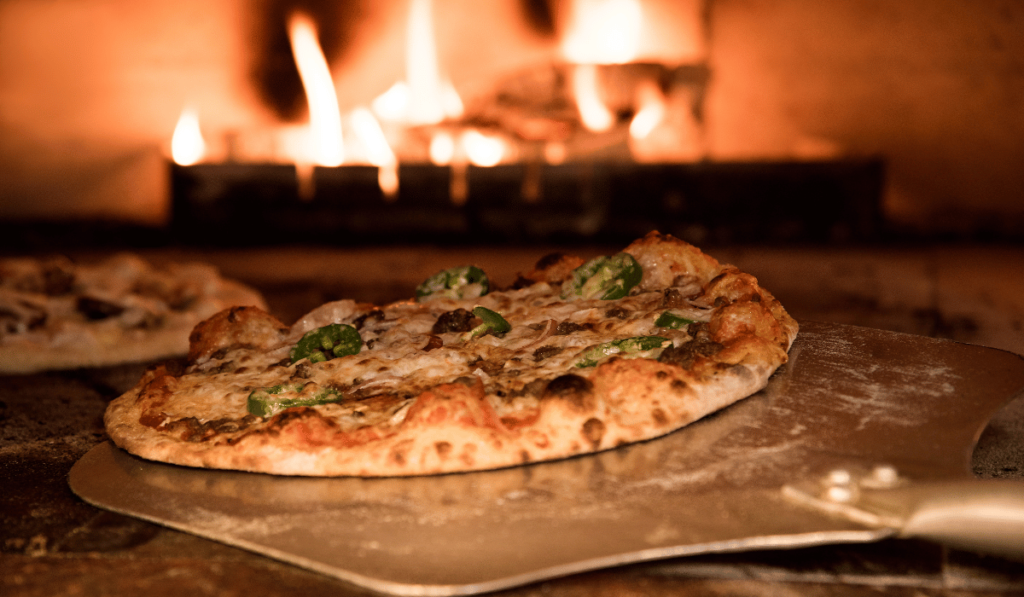The Best Fluffy Pancakes recipe you will fall in love with. Full of tips and tricks to help you make the best pancakes.
How to Make Pizza with Premade Pizza Dough
Are you craving a homemade pizza but don’t have the time or expertise to make dough from scratch? Don’t worry! With premade pizza dough, you can still enjoy a delicious and satisfying pizza without the hassle. In this comprehensive guide, we will walk you through the step-by-step process of making pizza using store-bought dough. Whether you prefer a classic Margherita or a loaded meat lover’s pizza, we’ve got you covered. Let’s dive in and learn how to create a mouthwatering pizza using premade dough!

Finding the Perfect Premade Pizza Dough
Local Pizza Shops
Before heading to the grocery store, consider checking out your local pizza shop. Many pizza restaurants sell their homemade dough, which is often fresher and of higher quality than store-bought options. Not only does buying dough from a local pizza shop support small businesses, but it also guarantees an authentic and professional taste for your homemade pizza.
Exploring the Grocery Store Aisles
If you can’t find fresh dough at a local pizza shop, don’t worry! Most grocery stores carry premade pizza dough, making it easily accessible for home cooks. Look for the refrigerated section, where you’ll likely find small bags of dough near the deli section or alongside other refrigerated dough products. If you can’t locate it, don’t hesitate to ask a store employee for assistance.
Frozen Pizza Dough
Another option to consider is frozen pizza dough. While fresh dough is preferable, frozen dough can still yield excellent results. Look for frozen pizza dough in the freezer section of your grocery store. If you plan ahead, you can thaw the dough in the refrigerator overnight, ensuring it’s ready to use when you’re ready to make your pizza. Some brands even offer high-quality frozen dough that can be shipped directly to your doorstep.
Preparing the Premade Pizza Dough

Bringing the Dough to Room Temperature
Once you have your premade dough, it’s essential to let it come to room temperature before working with it. Cold dough straight from the fridge is challenging to stretch and shape. To ensure the dough is pliable and easy to work with, leave it at room temperature for about an hour. This resting time will allow the dough to relax and become more elastic.
Shaping the Dough
When it comes to shaping the dough, it’s best to use your hands rather than a rolling pin. Rolling the dough can deflate the air pockets, resulting in a denser crust. On a lightly floured surface, gently press the dough down with your fingertips, starting from the center and working your way outwards. Gradually stretch the dough into a circular shape, rotating it as you go. Remember, perfection isn’t necessary—imperfections add character to your homemade pizza!
Transferring the Dough to a Pizza Peel or Baking Sheet
To transfer the shaped dough to a pizza peel or baking sheet, you’ll need a sprinkle of flour or a sheet of parchment paper. This step ensures that the dough doesn’t stick to the surface and can easily slide off onto your cooking surface. If using a pizza peel, lightly dust it with flour or cornmeal before placing the dough on top. If using a baking sheet, line it with parchment paper for easy transfer.
Preparing the Dough
Before adding your desired toppings, it’s essential to prepare the dough for optimal texture and even cooking. Prick the surface of the dough with a fork to prevent large air bubbles from forming during the baking process. Next, pre-bake the dough in a preheated oven at 450°F for about 7 minutes. This step, known as par-baking, ensures that the crust cooks evenly and doesn’t become soggy when topped with sauce and other ingredients.

Topping Your Pizza with Flavorful Ingredients
Pizza Sauce
The choice of pizza sauce largely depends on personal preference. Whether you opt for a classic marinara, a tangy BBQ sauce, or a creamy garlic sauce, make sure to spread it evenly over the par-baked dough. Use the back of a spoon or a ladle to create a thin layer, leaving a small border around the edges for the crust to shine.
Cheese
No pizza is complete without a generous amount of cheese. Mozzarella is the go-to cheese for most pizzas due to its excellent melting properties and mild flavor. However, feel free to experiment with other options like cheddar, provolone, or even a blend of different cheeses. Sprinkle the cheese evenly over the sauce, ensuring that every bite is filled with gooey, melty goodness.
Toppings
Now comes the fun part—adding your favorite toppings! Whether you prefer a classic Margherita with fresh basil and tomatoes or a meat lover’s pizza with pepperoni, sausage, and bacon, the choice is yours. Feel free to get creative and mix and match toppings to suit your taste buds. From vegetables like bell peppers and mushrooms to proteins like chicken and shrimp, the possibilities are endless.
Seasonings and Herbs
To elevate the flavor profile of your pizza, don’t forget to sprinkle it with seasonings and herbs. Classic Italian herbs like oregano, basil, and thyme add a fragrant aroma and a burst of freshness. Crushed red pepper flakes or chili flakes can provide a spicy kick, while garlic powder or minced garlic adds a savory element. Experiment with different combinations to find your perfect balance of flavors.
Baking Your Homemade Pizza to Perfection
Preheating the Oven and Choosing the Right Temperature
Before baking your pizza, preheat your oven to the desired temperature. The ideal temperature for homemade pizza is typically around 450°F to 500°F, depending on your oven’s performance. Preheating the oven ensures that the crust bakes evenly and develops a beautiful golden color.

Choosing the Right Baking Surface
When it comes to baking your pizza, the choice of a baking surface can impact the final result. If you have a pizza stone or baking steel, preheat it along with the oven to ensure even heat distribution. The stone or steel absorbs and retains heat, resulting in a crispier crust. If you don’t have a pizza stone, a baking sheet or pizza pan will work just fine.
Baking Time
The baking time for your homemade pizza will depend on various factors such as oven temperature, thickness of the crust, and the number of toppings. As a general guideline, bake the pizza for approximately 10-15 minutes or until the crust is golden brown and the cheese is bubbly and slightly browned. Keep a close eye on the pizza during the final minutes to prevent burning.
ALSO READ: How to Cook a Frozen Burger on the Grill
Cooling and Serving Your Homemade Pizza
Once your pizza is beautifully baked, it’s crucial to let it cool for a few minutes before slicing and serving. This brief resting period allows the cheese to set and prevents the toppings from sliding off. Use a pizza cutter or a sharp knife to slice the pizza into desired portions. Serve hot and enjoy the fruits of your labor!
Conclusion
Making pizza at home with premade pizza dough is a convenient and delicious way to satisfy your pizza cravings. By following these step-by-step instructions, you can create a mouthwatering homemade pizza that rivals your favorite pizzeria. Remember to let your creativity shine through by experimenting with different sauces, toppings, and seasonings. So, gather your ingredients, preheat the oven, and get ready to indulge in a slice of homemade perfection. Happy pizza-making!




